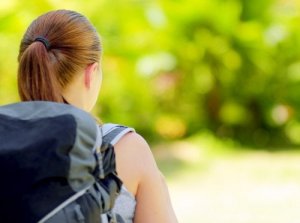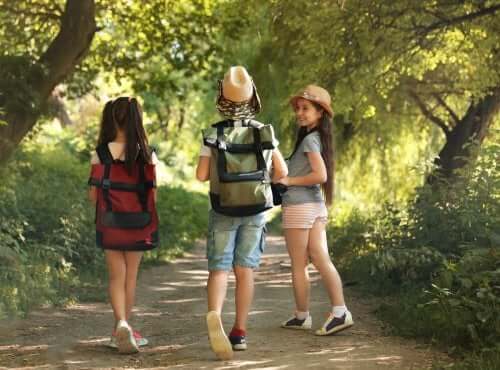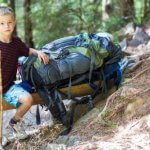How to Pack Your Child's Backpack for Camp

Summer camp is an attractive and beneficial experience for kids. And one thing that every parent needs to learn is how to prepare their child’s backpack for camp.
What should your child bring to camp? What should you leave at home? Who should be in charge of the backpack? These are just a few of the questions we’ll answer for your today.
In today’s article, we’ll look at all the aspects you need to keep in mind. That way, you’ll be sure to include all of the necessary items without overpacking.
Investigating the camp
First of all, we need to make an initial investigation of the camp itself. We need to know the characteristics or the destination, climate, and what sort of activities are part of the program.
For example, you’ll want to know if there will be a pool, hiking, wilderness camping, etc. And of course, you need to know how many days your little one will be gone for.
Normally, the camp organization itself will provide a list of some specific items your child will need. This often includes a sleeping bag, portable mattress, flashlight, etc.
Once you have that information, you can choose the right kind of backpack. The best backpacks for children are lightweight and have wheels.
However, this option might not be comfortable if your child will be walking on rough terrain with his or her backpack. If that’s the case, then look for something that’s comfortable to wear and easy to put on. Of course, make sure that the backpack you send is clean, sturdy and in good condition.

List of what to pack in your child’s backpack for camp
This list is fundamental in making sure you don’t forget anything essential. Below you’ll find a general list you can use as a guide to packing your child’s backpack for camp.
Remember to make any necessary adaptations, considering climate and how long camp will last. For example, if there’s a pool or lake to swim in, then you’ll need to add a swimsuit, beach towel and flip flops to the list.
- A hat that provides protection from the sun.
- Cotton socks and shoes that are comfortable for walking.
- A sleeping bag and, if needed, a portable mattress, sheets, extra blankets and a pillow.
- A toiletry bag with basic hygiene essentials (shampoo, soap, toothbrush, toothpaste, comb or brush, high SPF sunscreen, lotion, lip balm, and bug spray).
- A bath towel.
- Pajamas.
- Emergency contact information (including home, work and cell phone numbers of parents).
- Health insurance information.
If your child has any illness or health condition, then you should include pertinent information:
- Medication, including instructions regarding dosage and administration.
- Specific care needs (dietary restrictions, etc).
- Activities that your child can’t participate in, or requires certain adaptations.
- How to respond in the case of an emergency, what the symptoms are, etc.
What clothing to pack in your child’s backpack for camp
All of the clothing that you send with your child to camp needs to be comfortable and resistant. Also, make sure it’s easy to put on and take off, and that it dries quickly.
Jeans and items made of cotton are your best option. Pack one set of clothing per day, and at least 2 extra sets as well.
Don’t forget to label your child’s clothing, shoes, hygiene products and other personal items. This includes flashlights, water bottles, sun glasses, etc. Even though camp counselors will be there to assist, putting your child’s name on everything prevents loss and mix ups.

Who should be responsible for packing?
One or two days before camp starts (depending on how anxious your children are) you should start packing. Involve your children as much as possible. Allow them to check off items on their list as they place each one in their backpack for camp.
Furthermore, you can spend some time talking about the best way to pack everything that needs to go along. For example, what things will your child need first?
Those are the items that should go on top so they’re easy to reach. If your child’s bag has several pockets, then you can decide what items should go into each pocket.
It’s important for children to learn to pack their own bags. It helps them have a better idea of what they’re taking along, which items belong to them, and where to find them.
If children are old enough to go to camp, then they’re perfectly capable of packing their bags – or at least participating actively in the process. As the years go by, you’ll no doubt observe how much better they get at it.
You can, of course, be present as your child packs and provide help if necessary. For example, you can offer suggestions on how to organize things and make sure nothing is forgotten.
By allowing children to pack their own bags, you’re teaching them to be responsible and take care of their things. What’s more, when it’s time to come home, they’ll be able to repack their things on their own.
Summer camp is an attractive and beneficial experience for kids. And one thing that every parent needs to learn is how to prepare their child’s backpack for camp.
What should your child bring to camp? What should you leave at home? Who should be in charge of the backpack? These are just a few of the questions we’ll answer for your today.
In today’s article, we’ll look at all the aspects you need to keep in mind. That way, you’ll be sure to include all of the necessary items without overpacking.
Investigating the camp
First of all, we need to make an initial investigation of the camp itself. We need to know the characteristics or the destination, climate, and what sort of activities are part of the program.
For example, you’ll want to know if there will be a pool, hiking, wilderness camping, etc. And of course, you need to know how many days your little one will be gone for.
Normally, the camp organization itself will provide a list of some specific items your child will need. This often includes a sleeping bag, portable mattress, flashlight, etc.
Once you have that information, you can choose the right kind of backpack. The best backpacks for children are lightweight and have wheels.
However, this option might not be comfortable if your child will be walking on rough terrain with his or her backpack. If that’s the case, then look for something that’s comfortable to wear and easy to put on. Of course, make sure that the backpack you send is clean, sturdy and in good condition.

List of what to pack in your child’s backpack for camp
This list is fundamental in making sure you don’t forget anything essential. Below you’ll find a general list you can use as a guide to packing your child’s backpack for camp.
Remember to make any necessary adaptations, considering climate and how long camp will last. For example, if there’s a pool or lake to swim in, then you’ll need to add a swimsuit, beach towel and flip flops to the list.
- A hat that provides protection from the sun.
- Cotton socks and shoes that are comfortable for walking.
- A sleeping bag and, if needed, a portable mattress, sheets, extra blankets and a pillow.
- A toiletry bag with basic hygiene essentials (shampoo, soap, toothbrush, toothpaste, comb or brush, high SPF sunscreen, lotion, lip balm, and bug spray).
- A bath towel.
- Pajamas.
- Emergency contact information (including home, work and cell phone numbers of parents).
- Health insurance information.
If your child has any illness or health condition, then you should include pertinent information:
- Medication, including instructions regarding dosage and administration.
- Specific care needs (dietary restrictions, etc).
- Activities that your child can’t participate in, or requires certain adaptations.
- How to respond in the case of an emergency, what the symptoms are, etc.
What clothing to pack in your child’s backpack for camp
All of the clothing that you send with your child to camp needs to be comfortable and resistant. Also, make sure it’s easy to put on and take off, and that it dries quickly.
Jeans and items made of cotton are your best option. Pack one set of clothing per day, and at least 2 extra sets as well.
Don’t forget to label your child’s clothing, shoes, hygiene products and other personal items. This includes flashlights, water bottles, sun glasses, etc. Even though camp counselors will be there to assist, putting your child’s name on everything prevents loss and mix ups.

Who should be responsible for packing?
One or two days before camp starts (depending on how anxious your children are) you should start packing. Involve your children as much as possible. Allow them to check off items on their list as they place each one in their backpack for camp.
Furthermore, you can spend some time talking about the best way to pack everything that needs to go along. For example, what things will your child need first?
Those are the items that should go on top so they’re easy to reach. If your child’s bag has several pockets, then you can decide what items should go into each pocket.
It’s important for children to learn to pack their own bags. It helps them have a better idea of what they’re taking along, which items belong to them, and where to find them.
If children are old enough to go to camp, then they’re perfectly capable of packing their bags – or at least participating actively in the process. As the years go by, you’ll no doubt observe how much better they get at it.
You can, of course, be present as your child packs and provide help if necessary. For example, you can offer suggestions on how to organize things and make sure nothing is forgotten.
By allowing children to pack their own bags, you’re teaching them to be responsible and take care of their things. What’s more, when it’s time to come home, they’ll be able to repack their things on their own.
All cited sources were thoroughly reviewed by our team to ensure their quality, reliability, currency, and validity. The bibliography of this article was considered reliable and of academic or scientific accuracy.
- Colin Towell. (2018). Manual de supervivencia: habilidades para la aventura en exteriores. Blume.
This text is provided for informational purposes only and does not replace consultation with a professional. If in doubt, consult your specialist.








